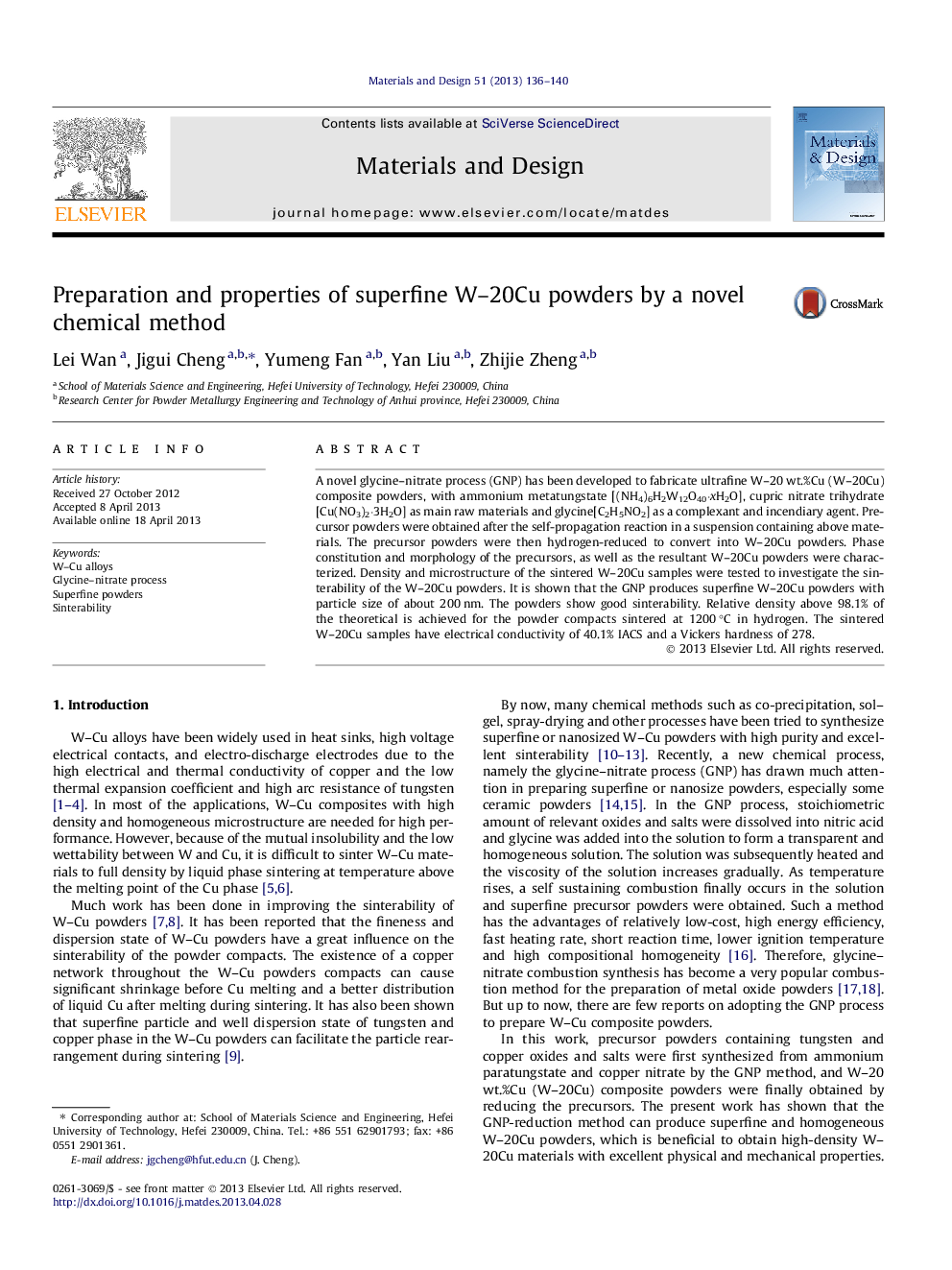| Article ID | Journal | Published Year | Pages | File Type |
|---|---|---|---|---|
| 829820 | Materials & Design (1980-2015) | 2013 | 5 Pages |
•A wet chemical method, namely the glycine–nitrate process (GNP) was firstly proposed to synthesize W–20Cu powder.•The GNP method can produce superfine W–20Cu powder with particle size of about 200 nm.•The W–20Cu powder prepared by the GNP shows excellent sinterability.•The sintered W–20Cu samples have homogeneous microstructure and good electrical conductivity.
A novel glycine–nitrate process (GNP) has been developed to fabricate ultrafine W–20 wt.%Cu (W–20Cu) composite powders, with ammonium metatungstate [(NH4)6H2W12O40⋅xH2O], cupric nitrate trihydrate [Cu(NO3)2⋅3H2O] as main raw materials and glycine[C2H5NO2] as a complexant and incendiary agent. Precursor powders were obtained after the self-propagation reaction in a suspension containing above materials. The precursor powders were then hydrogen-reduced to convert into W–20Cu powders. Phase constitution and morphology of the precursors, as well as the resultant W–20Cu powders were characterized. Density and microstructure of the sintered W–20Cu samples were tested to investigate the sinterability of the W–20Cu powders. It is shown that the GNP produces superfine W–20Cu powders with particle size of about 200 nm. The powders show good sinterability. Relative density above 98.1% of the theoretical is achieved for the powder compacts sintered at 1200 °C in hydrogen. The sintered W–20Cu samples have electrical conductivity of 40.1% IACS and a Vickers hardness of 278.
